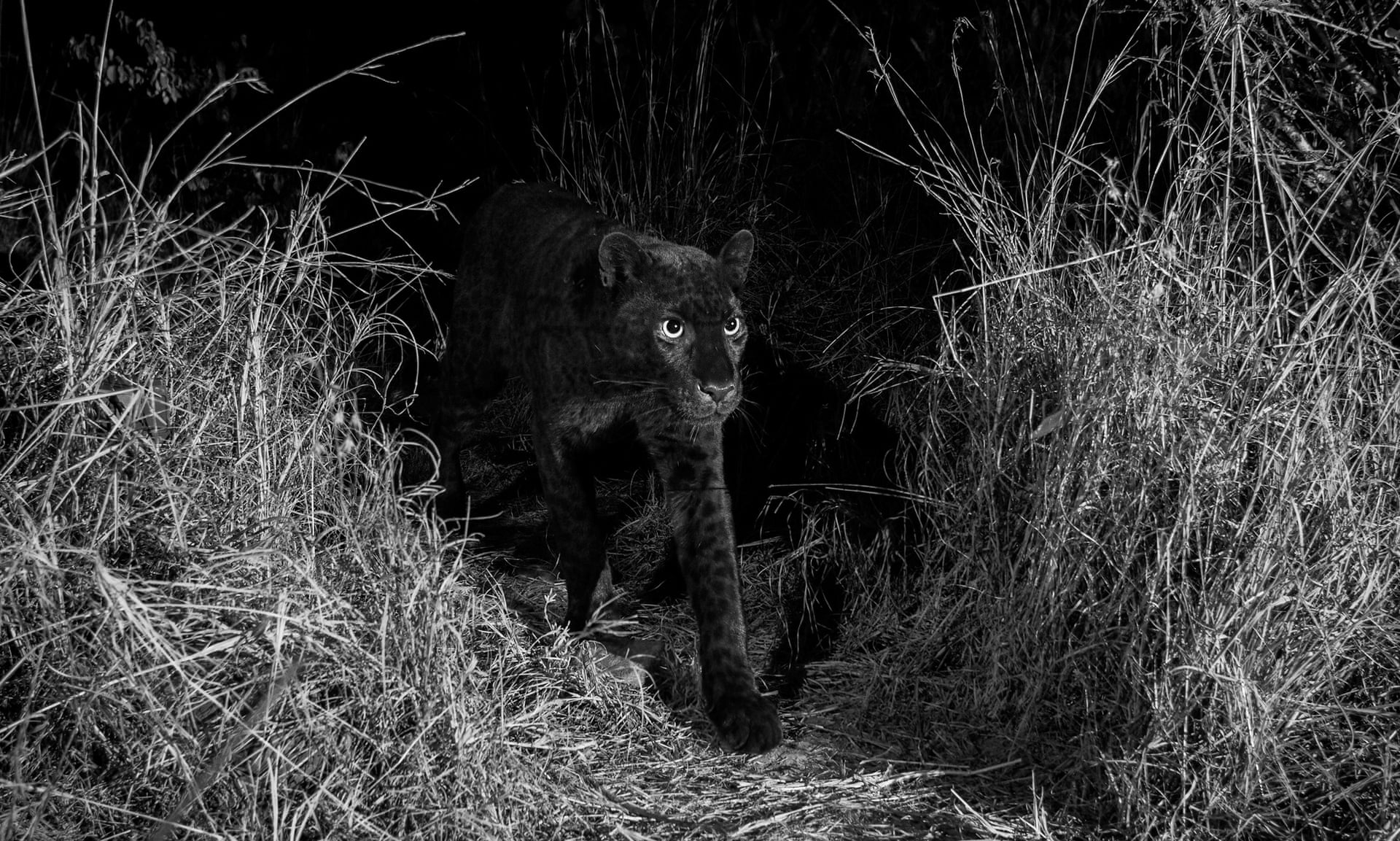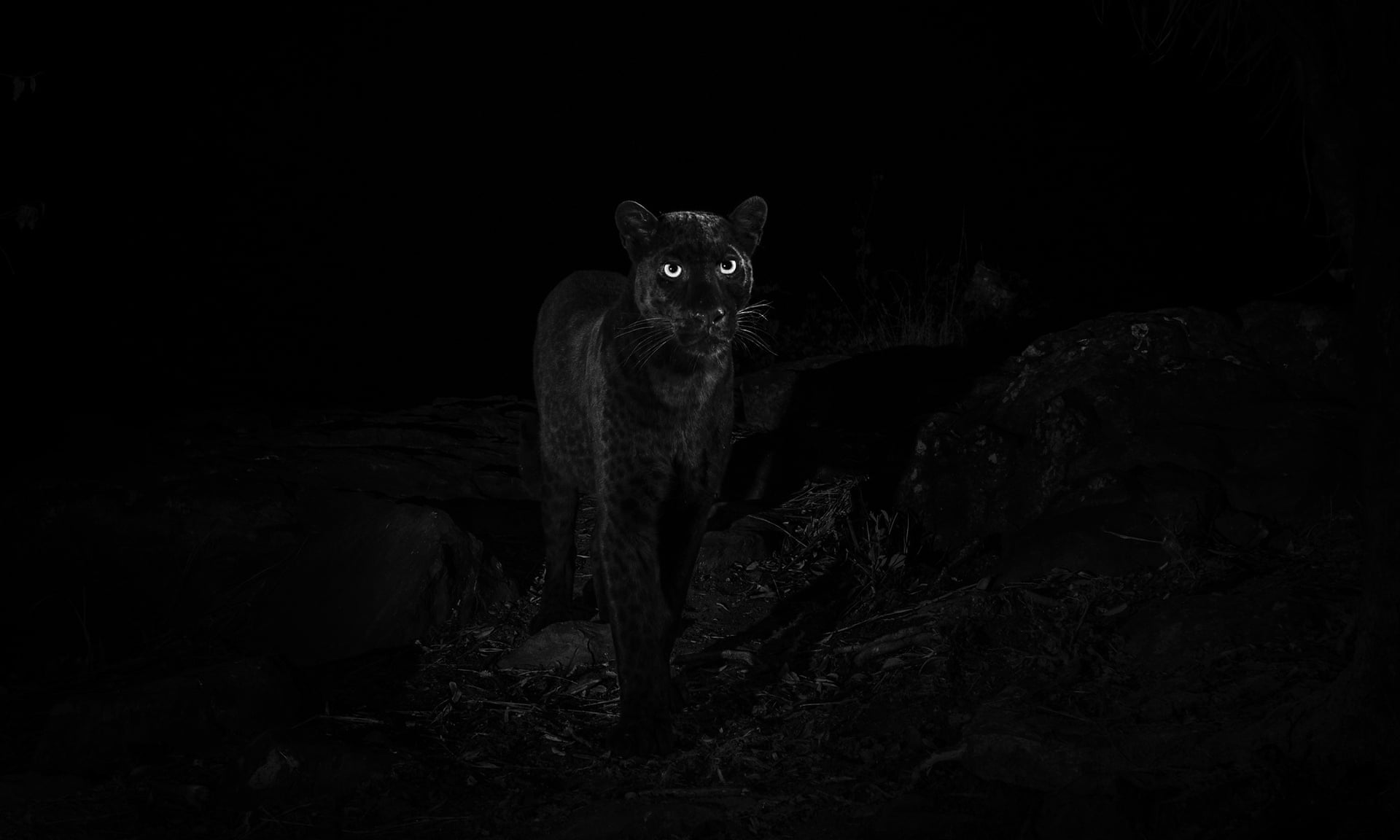Images were taken by British wildlife photographer, Will Burrard-Lucas, in Laikipia Wilderness Camp in Kenya.
The wild African black leopard has been the stuff of legend and campfire story for decades.
The animal – whose coat is sooty black as a result of melanism, the opposite of albinism – is extremely rare.
But a British wildlife photographer has become the first person to photograph the black leopard in more than a century.

Will Burrard-Lucas captured the images, which were released to the public on Monday, at the Laikipia Wilderness Camp in Kenya after hearing reports of sightings in the area.
After meeting with locals who had seen the animals, and following leopard tracks, Burrard-Lucas set up a Camtraptions camera trap that included wireless motion sensors, in the hope of photographing the animals at night.
After several days without success Burrard-Lucas returned to his cameras to find a striking image.
“I had a quick look at the last trap, not expecting to find much,” Burrard-Lucas wrote on his blog. “As I scrolled through the images on the back of the camera, I paused and peered at the photograph below in incomprehension … a pair of eyes surrounded by inky darkness … a black leopard! I couldn’t believe it and it took a few days before it sank in that I had achieved my dream.”

